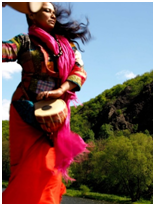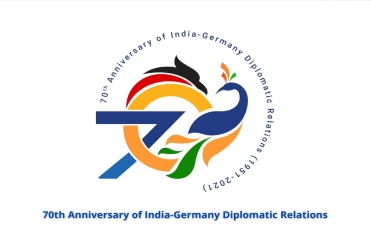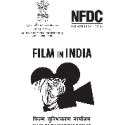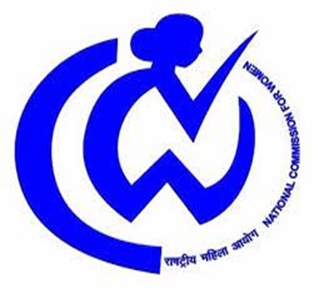- Home
- About Us
-
Consular Services
- Launch of e-Clearance for Afterlife Remains (eCARe) portal
- Instructions regarding entry into the consular Wing
- Reissue of International Driving Permit (IDP)
- General Contact details
- Postal Applications
- Visa Services
- Passport Services
- OCI Information
- Renunciation of Indian Citizenship/Surrender Certificate
- Attestation,Consular and Misc.Services
- Weekly Open House
- MADAD - Consular Services Management System
- Indian Community Welfare Fund
- FAQs on Marital disputes involving NRI/PIO spouses

- Public Notices & Circulars
-
Embassy Wings
- Economic & Commercial Wing
- Contacts
- GI Digital Catalogue

- Overview of Indian Economy
- India-Germany Economic & Commercial Relations
- Doing Business in India
- Make in India

- Invest India

- Flagship Programs of Government of India

- Doing Business in Germany
- Trade Fairs
- Trade Dispute Advisory
- Foreign Investment
- Foreign Trade
- Newsletters

- Attestation of Documents

- Community Welfare
- Culture
- Information Wing/Media Center
- Science & Technology

- Political
- Consular
- Defence Wing
- Economic & Commercial Wing
-
Media Center
- e-books

- India Perspectives

- Documentaries

- Constitution Day 2023
- Calendar of Activities
- Press Releases
- News Articles
- Constitution Day
- Flag Code of India and Prevention Insults National Honour Act, 1971
- INDIA @THE UN SECURITY COUNCIL 2021-2022
- Important statements by policy-makers in India

- Photo Gallery
- Yoga

- e-books
- India-Germany Relations
- MIIM
- Useful Links
- Tenders
Baul
Wednesday 04 November 2015 18:00 hrs |
|
Concert GURU SHISHYA PARAMPARA Pandit Purna Das Baul – vocals, khomok |
Parampara – this word with its pulsating sound is a symbol for the continuity and vibrancy of Indian spiritual and artistic traditions. It can only roughly be translated as succession or tradition, and unfolds its full meaning in the in the concept of Guru Shishya Parampara, in which knowledge is transmitted by the spiritual master to his disciple. The guru – source of wisdom and knowledge, preserver of the tradition. The shishya – an open vessel for the guru’s instructions and warrantor of the survival of the lore. Both share a close, personal relationship usually undisclosed to the public. Purna Das Baul was groomed from early childhood to carry on the mystical heritage of his forefathers. He followed the traditional pattern of wandering from village to village, unfettered by any restrictive social or economic obligations. He spent his childhood wandering with his father Nabani Das from place to place, singing Baul songs. He often would visit sacred sites where Sadhus (ascetics, holy men) would congregate for religious festivals. In the true Baul spirit, Purna Das broke even his own traditions. He was the first Baul to leave the itinerant life to perform on radio, television and in movies. Again, he was the first to start a permanent residence for Bauls with the idea of freeing them from a life of begging and being despised in a modern world. In 1962, Purna Das carried the Baul message to the west, performing in Helsinky at the World Youth Festival. In 1967, Allen Ginsberg and Albert B. Grossman, manager of Bob Dylan, brought Purna Das Baul to the U.S. Purna Das Baul’s career took him to 140 major countries, he performed with Bob Dylan, Mahalia Jackson, Mick Jagger, Peter Paul and Mary, Gordon Lightfoot, Joan Baez, Pandit Ravi Shankar, Bob Marley, Peter Gabriel and with many other personalities. Purna Das performed three times at the White House for three different U.S. presidents. In India he has hundreds of albums to his credit and performs regularly in radio, TV and in films. ……………………………………………………………………………………………….. Parampara - dieses Wort mit seinem pulsierenden Sound ist ein Symbol für die Kontinuität und Lebendigkeit der indischen spirituellen und künstlerischen Traditionen. Es kann nur grob als Abfolge oder Tradition übersetzt werden, und entfaltet seine volle Bedeutung in dem Konzept der Guru-Shishya-Parampara, nach dem Wissen vom Lehrmeister auf seinem Schüler übertragen wird. Der Guru - Quelle der Weisheit und Erkenntnis, Bewahrer der Tradition. Der Shishya - ein offenes Gefäß für die Anweisungen des Gurus und Garant für das Bestehen der Überlieferung. Beide stehen in einer engen, persönlichen Beziehung, in der Regel für die Öffentlichkeit nicht sichtbar. Purna Das Baul folgte seit früher Kindheit dem mystischen Erbe seiner Vorfahren, indem er von Dorf zu Dorf wanderte, befreit von allen einschränkenden sozialen oder wirtschaftlichen Verpflichtungen. So pilgerte er oft auch zu heiligen Stätten, um die sich die Sadhus (Asketen, heilige Männer) für religiöse Feste versammelten. Er war der erste Baul, der dieses nomadische Wanderleben verließ, um in Radio, Fernsehen und Filmen aufzutreten und der einen festen Wohnsitz hatte. Im Jahr 1962 nahm er am Weltjugendfestival in Helsinki teil. Purna Das Baul’s Karriere führte ihn in 140 Länder, er trat gemeinsam mit Bob Dylan, Mahalia Jackson, Mick Jagger, Peter Paul and Mary, Gordon Lightfoot, Joan Baez, Pandit Ravi Shankar, Bob Marley, Peter Gabriel und vielen anderen Persönlichkeiten auf. Dreimal sang er im Weißen Haus für verschiedene US-Präsidenten. In Indien hat er Hunderte von Alben auf seinem Konto und tritt regelmäßig in Radio, Fernsehen und in Filmen auf. Purna Das erhielt viele renommierte Auszeichnungen: Sangeet Natak Akademy Award (1999), Tulsi (2000), Lifetime Achievement Award der Mutter Teresa-Gesellschaft (2012), und Padma Shri, eine der höchsten indischen zivilen Auszeichnungen. |
||
Embassy of India Bus 200 Tiergartenstraße |
|
Entrance with valid ID card or passport only. |



























